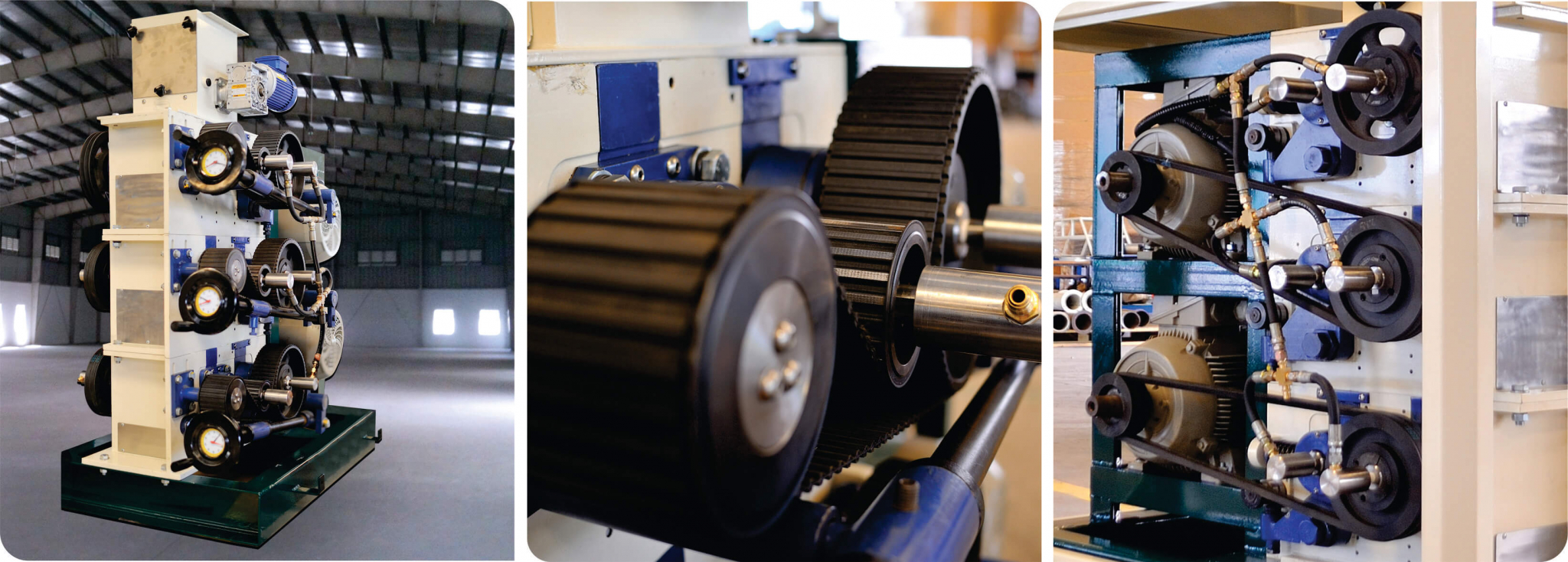Industrial Coffee Grinder for Large-Scale Brewing: A Necessary Tool
Industrial Coffee Grinder for Large-Scale Brewing: A Necessary Tool
Blog Article
Industrial Coffee Mill Overview: Increase Efficiency and Quality
In the competitive landscape of coffee production, picking the ideal commercial coffee mill plays a pivotal role in enhancing both performance and product top quality. Comprehending the nuances of various mill kinds and crucial features-- such as customizable grind setups and robust building and construction-- can significantly affect the final taste profile of the coffee.
Comprehending Grinder Types
When selecting an industrial coffee grinder, understanding the numerous kinds available is critical for maximizing both flavor extraction and functional efficiency. The two key kinds of grinders are blade mills and burr mills.

Eventually, choosing the best sort of grinder is integral to maintaining high quality and performance in coffee production, making it vital for organizations to invest in high-quality burr mills for ideal outcomes.
Trick Functions to Consider
Picking an industrial coffee grinder requires mindful factor to consider of several crucial features that can considerably influence both efficiency and the total coffee experience. One of the primary facets to review is the grinding device. Burr mills are generally favored over blade grinders, as they offer a constant work size, which is critical for ideal removal and flavor.
An additional vital feature is the mill's capacity. Depending on the volume of coffee you need to process, pick a design that can handle your demands without compromising rate or top quality. Additionally, think about the grind setups offered. A functional mill with numerous setups enables you to customize the work dimension to various brewing techniques, improving the coffee's taste account.
Examine the grinder's noise degree, particularly in a busy café or production atmosphere, where too much sound can be turbulent. Investing in a grinder that stabilizes these features can significantly improve both operational performance and the high quality of the coffee served.
Optimizing Grinding Refine
To accomplish the finest results in coffee prep work, maximizing the grinding procedure is necessary. The grind size dramatically influences removal, flavor, and general quality of the made coffee. Different developing methods require specific work sizes; for instance, espresso demands a fine work, while French press requires a crude appearance. Understanding the relationship in between grind dimension and developing approach is the very first step in optimization.


In addition, keeping an eye on the grinding speed can optimize the process. Slower grinding usually generates much less warm, preserving delicate flavors and scents. On the other hand, faster grinding might generate too much warm, adversely affecting the coffee's quality.
Upkeep and Care Tips
Appropriate maintenance and treatment of commercial coffee grinders are essential for making certain optimal efficiency and long life. Normal cleansing is the foundation of maintenance; deposit buildup can impact flavor and grinding efficiency. It is a good idea to clean up the grinder after each use, wiping down the outside and getting rid of any type of coffee grounds from the burrs.
Furthermore, inspect the grinding burrs for damage. Dull burrs can compromise grind uniformity, so they should be replaced as necessary. Industrial Coffee Grinder. Regularly adjusting the mill is additionally important, as this keeps the desired grind size for numerous brewing approaches
Lubrication of relocating components need to be done according to the producer's specs, as this minimizes rubbing and lengthens the life of the devices. It is necessary to make use of food-grade lubes to guarantee safety and security and conformity with health and wellness regulations.
Lastly, maintain the grinder in a dry and steady setting to prevent rust and corrosion. By sticking to these upkeep and treatment tips, operators can boost the performance of their commercial coffee grinders while making certain top notch output and expanded operational life.
Roi Evaluation
Examining the roi (ROI) for industrial coffee mills is essential for businesses looking for to maximize their coffee production capabilities. A detailed ROI analysis assists determine the monetary stability of investing in top quality grinders, enabling services to consider the initial costs against prospective gains.
Evaluate the acquisition cost of the grinder, including installation and any type useful site of essential alterations to existing infrastructure. High-performance mills usually lead to minimized grinding time and boosted throughput, which can substantially boost efficiency.
Furthermore, take into consideration the influence on item high quality. Industrial Coffee Grinder. Superior mills generate a more constant grind size, which can improve flavor profiles and client contentment, eventually driving sales. By increasing the top quality of the end product, services can warrant greater prices, causing raised earnings
Conclusion
In recap, a commercial coffee mill plays an essential function in enhancing both performance and item top quality within coffee manufacturing. By choosing high-quality burr grinders equipped with necessary functions such as flexible work setups and sturdy building and construction, companies can ensure ideal taste extraction. In addition, regular maintenance is critical for maintaining grinder performance and taking full advantage of consumer satisfaction. Eventually, the calculated investment in a trusted grinder adds considerably to improved income and competitiveness in the coffee industry.
In the competitive landscape of coffee manufacturing, choosing the ideal commercial coffee grinder plays a crucial role in improving both efficiency and item official source quality. The two main types of grinders are blade mills and burr mills. Within the burr mill category, there are flat burr mills and cone-shaped burr grinders, each with its advantages. Burr grinders are normally chosen over blade mills, as they give a regular work dimension, which is vital for ideal removal and taste.
In summary, a commercial coffee mill plays a pivotal duty in improving both performance and item quality within coffee production.
Report this page